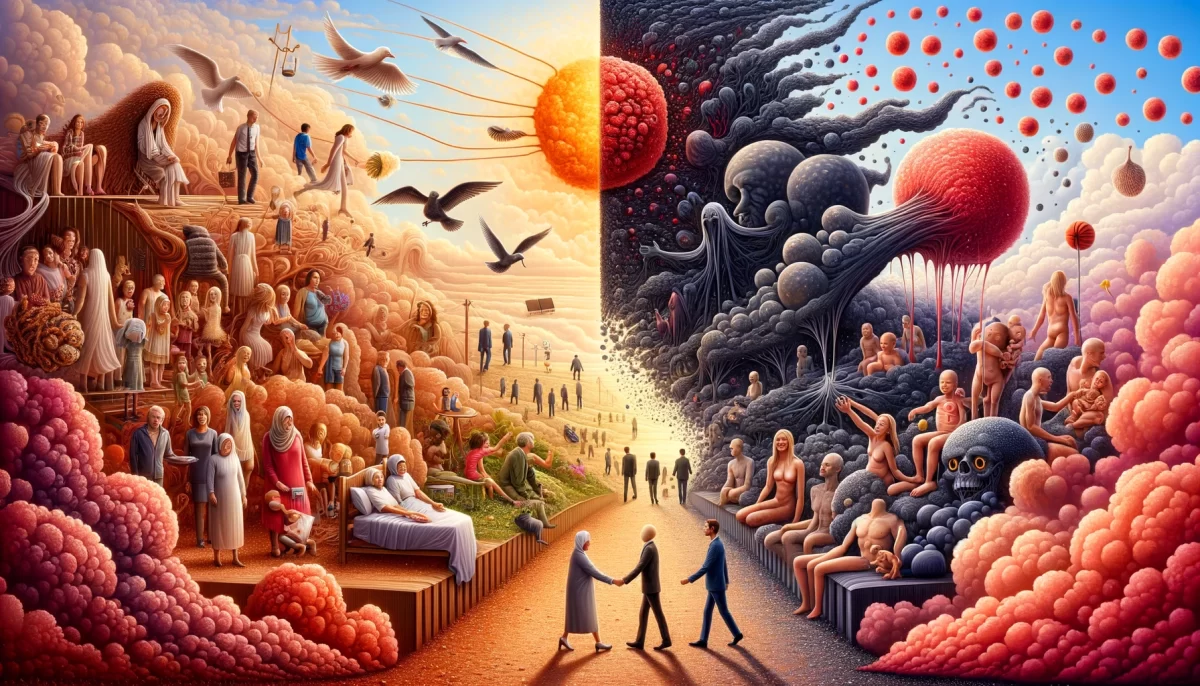Trains of Thought
We never have
problems with people,
only their trains of thought.
They believe
what they believe,
and their train
is going in a
different direction
than your train.
To you,
a head-on collision
seems imminent.
To them,
their track is wide open.
They are not even on your track.
This is why
they are not arguing
that you are wrong.
You believe yourself right,
and it seems difficult changing that.
They, on the other hand,
believe that you can be right
AND they can be right, so no problem.
The problem is you.
You believe there’s a problem.
And they don’t.
You think
that they SHOULD
believe that
there’s a problem.
But they don’t.
YOU are trying to IMPOSE
your problem on them.
People do not generally
like being imposed upon.
So, in essence,
you are CREATING
a problem by making your
opposition known.
Repeat.
Your problem has NOTHING to do
with that OTHER person.
You are MAKING it
about that other person.
Your limiting beliefs are
making it VERY DIFFICULT
for anyone else
to have their beliefs.
Not without conflict, anyway.
Arising from YOU.
But don’t take it the wrong way.
I’m talking to myself.
So I won’t.
Trail Wood,
6/5
Space Monkey Reflects: Navigating the Diverging Trains of Thought
The metaphor of “Trains of Thought” provides a vivid illustration of how individual beliefs and perceptions travel along their own unique tracks, often leading to different destinations without the necessity of conflict. This imagery encapsulates the essence of human diversity in thought and the potential for peaceful coexistence despite differing perspectives.
In this landscape, each train—each person’s train of thought—moves along a track laid out by their experiences, beliefs, and values. The modern, sleek train represents those who embrace progressive, open-minded approaches, while the traditional, sturdy train symbolizes a more conservative, perhaps steadfast viewpoint. The divergence of these tracks into separate horizons symbolizes the realization that differing viewpoints need not lead to conflict but can instead signify the healthy plurality of human thought.
The peaceful setting, with no imminent collisions, challenges the often-held assumption that different must mean oppositional. It reinforces the idea that acknowledging the separate journeys of understanding can lead to a more harmonious coexistence. It is a call to appreciate that the landscape of human beliefs is vast and varied, and that each path, though different, has its own validity and rationale.
This reflection also addresses the personal realization that conflict often arises not from the actual differences in thought but from the insistence that these differences must inherently lead to a problem—that one’s own train of thought must either converge with another’s or face inevitable collision. The acknowledgment that “the problem is you” serves as a profound personal insight into the source of conflict: it is not the existence of different tracks but the refusal to accept these tracks can exist independently and without conflict.
By embracing this metaphor, we are invited to consider our own trains of thought. Are we seeking to impose our route on others, or are we open to the parallel journeys that others are taking? This perspective encourages a shift from conflict to curiosity, from imposing to understanding, fostering a space where multiple truths can coexist without the need for dominance or submission.
Summary
The metaphor of ‘Trains of Thought’ highlights the diversity of human perspectives and the potential for peaceful coexistence despite these differences. It encourages an understanding that conflicts arise not from differences themselves but from our responses to these differences.
Glossarium
Trains of Thought: A metaphor for individual lines of reasoning or belief systems, depicted as trains traveling on distinct tracks, symbolizing different but valid perspectives.
Parallel Journeys: Represents the concept that differing viewpoints can coexist harmoniously, moving in parallel without intersecting or conflicting.
Quote
“Different tracks do not a collision make; it is our refusal to allow divergence that brings conflict.” — Space Monkey
Poem
Along the rails of thought we glide
each in our carriage, side by side
no tracks to cross, no need to vie
under the vast, unending sky
Your journey’s yours, and mine is mine
with different scenes, by design
no train need halt, no path converge
within this peaceful, rolling surge
Let’s honor each distinct ride
celebrate how wide
the tracks can span, the views can be
in this rail network of humanity
Here, respect is the fuel we use
as we travel, as we muse
for in this journey, shared yet sole
we find the collective, heartfelt goal
We are Space Monkey.



































“Every man takes the limits of his own field of vision for the limits of the world.” – Arthur Schopenhauer
The passage above delves into the dynamics of interpersonal conflicts and the clash of differing perspectives. It suggests that the root of these problems lies not in the individuals themselves but in their respective trains of thought. Each person believes what they believe, and their thoughts follow a different track than yours.
Arthur Schopenhauer’s quote resonates with the essence of the passage, emphasizing how individuals perceive the world based on their own limited field of vision. It suggests that each person’s understanding and beliefs are shaped by their individual experiences, which can lead to divergent perspectives and potential conflicts.
The passage highlights the tendency to perceive disagreement or differing viewpoints as problems. It points out that while you may see a head-on collision of ideas as imminent, others may believe their track is wide open. The conflict arises when you try to impose your beliefs or problems on others, who do not necessarily see the situation in the same light.
The passage encourages introspection and self-reflection, acknowledging that the perceived problem lies within oneself rather than the other person. It suggests that your own limiting beliefs and the insistence that others should see the problem as you do create conflict. By recognizing this internal process, you can begin to understand that each person’s beliefs and perspectives are valid from their own point of view.
So, dear seeker, consider the wisdom in understanding that conflicts often arise from the clash of different trains of thought. Recognize that each person’s perspective is influenced by their unique experiences and beliefs. By acknowledging this, you can navigate disagreements with greater empathy and understanding, allowing for a more harmonious exchange of ideas.
With contemplative curiosity,
Space Monkey